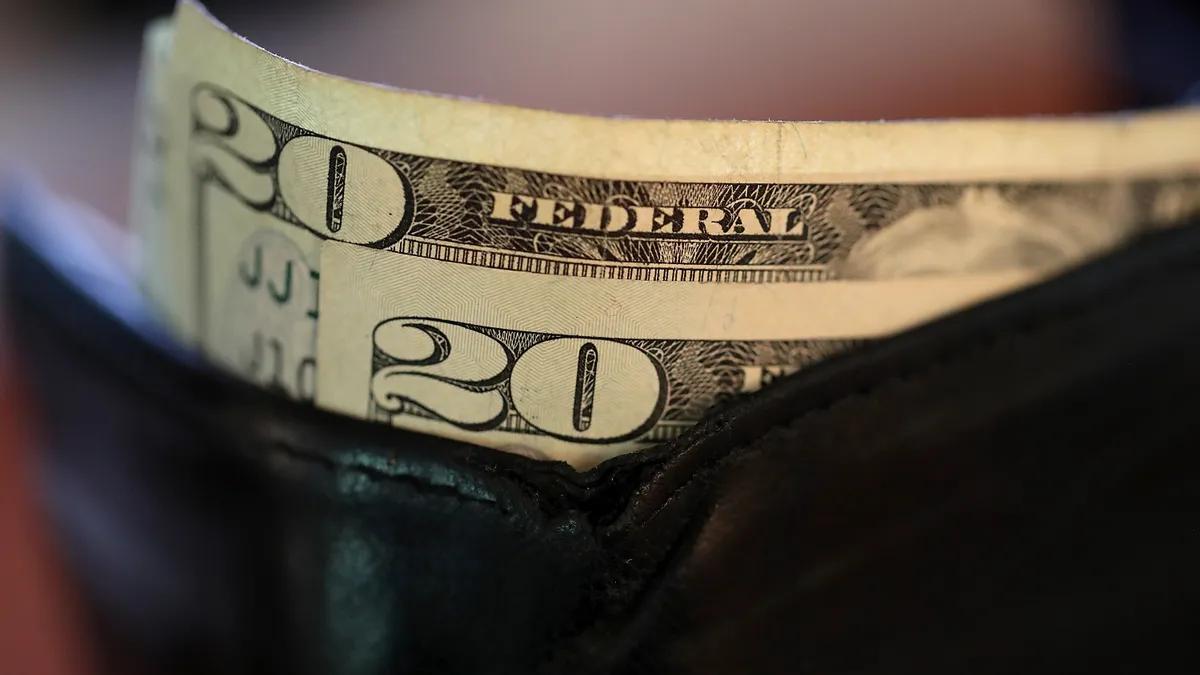Dive Brief:
- Inflation eased more than expected last month but persisted near a 40-year high, likely prompting the Federal Reserve to press on with its most aggressive pullback of stimulus since the 1980s.
- The consumer price index (CPI) rose 8.5% in July compared with the same month last year after increasing 9.1% on an annual basis in June, the Labor Department said Wednesday. Falling prices for used cars, apparel, air fares and energy — especially a 7.7% decline in gasoline prices — blunted gains in other goods and services.
- Inflation remained high in the components of CPI especially essential to consumers. Food prices surged 10.9% compared with July 2021 for the biggest gain since 1979. Housing costs, the CPI’s dominant services category, rose 5.7% in the largest increase since 1991.
Dive Insight:
Fed Chair Jerome Powell and other policymakers have said in recent weeks that the central bank needs to see some months of falling price pressures before it begins to slow its policy tightening and feel confident inflation is declining toward its 2% goal.
The central bank is “far, far, far away from declaring victory” in its fight against inflation, Minneapolis Fed President Neel Kashkari predicted Wednesday while welcoming the dip in price gains last month.
Policymakers “said we have a duty to get to 2%,” Kashkari said during a panel discussion hosted by the Aspen Institute. “We're united in that commitment, and we're going to do what we need to do to get inflation back down to 2%.”
Disruptive price pressures may persist into 2023, Fed Governor Michelle Bowman said in a speech on Saturday. “I see significant risk of high inflation into next year for necessities including food, housing, fuel and vehicles.”
Referring to the Fed’s decision in July to raise the main interest rate 75 basis points for the second consecutive month, Bowman said, “similarly sized increases should be on the table until we see inflation declining in a consistent, meaningful and lasting way.”
Powell has predicted that policymakers will consider a 50 to 75 basis point increase in the federal funds rate during their next two-day meeting ending Sept. 21.
Referring to inflation, Cleveland Fed President Loretta Mester said, “what we want to do is see it on a sustainable downward path towards our longer-run goal of 2% and we have not seen that — we have more work to do.”
“You wouldn’t want to conclude too quickly that inflation is on a downward path because of how high it is, and how much risk there is that if it remains high, it could become embedded in the economy,” Mester said on Aug. 2 in a Washington Post podcast.
The Fed faces the challenge of raising borrowing costs sufficiently to rein in demand and inflation, but not so much that it causes a recession. Public comments about its determination to reduce price pressures may be getting through to consumers.
The New York Fed found in a survey last month that expectations for median inflation in July 2023 fell to 6.2% from 6.8% in a June survey. Consumers expect 3.2% inflation in three years, down from 3.6% in June, and 2.3% in five years compared with 2.8% in the prior survey.
“Expectations about year-ahead price increases for gas and food fell sharply,” the New York Fed said, adding that consumers also foresee slower growth in home prices.












